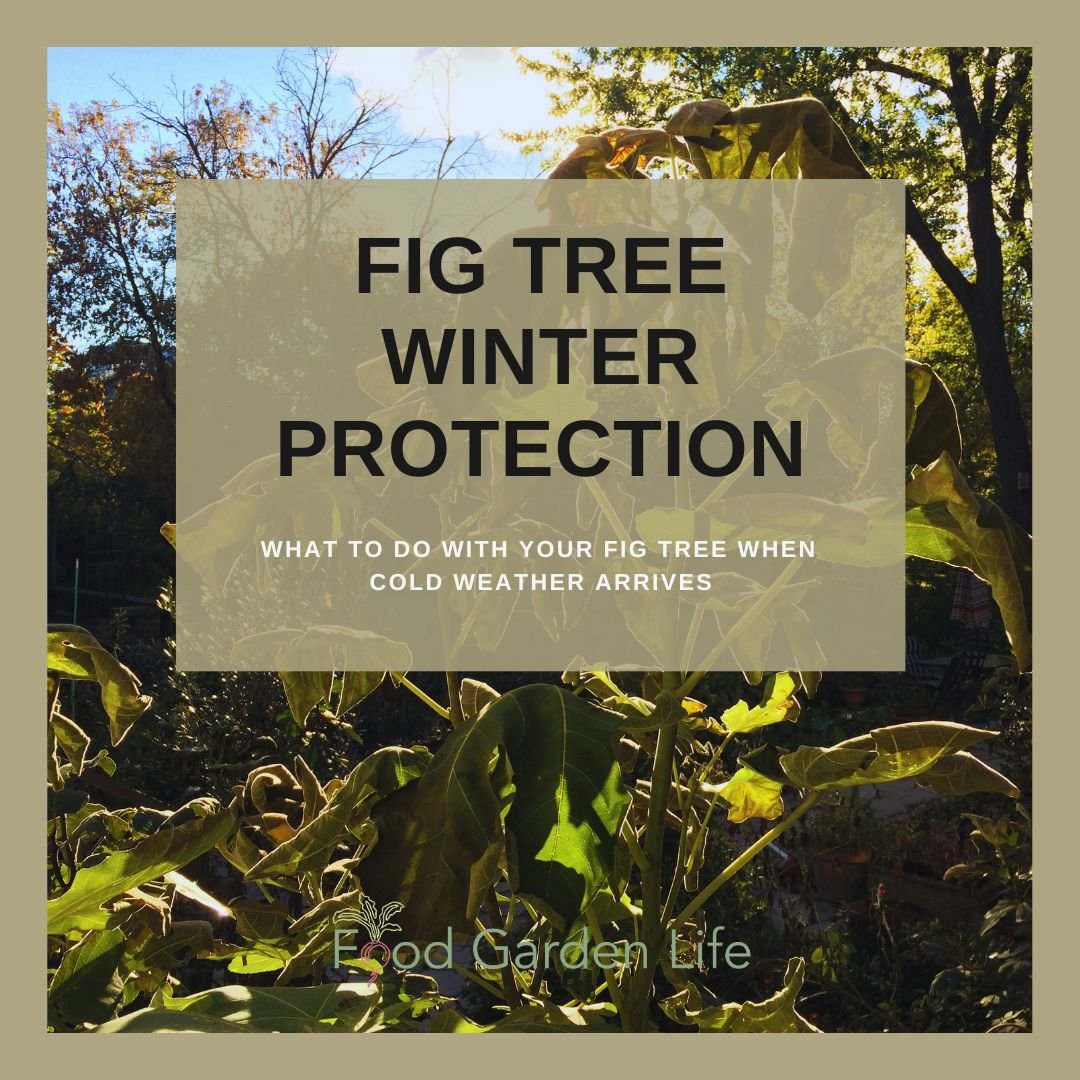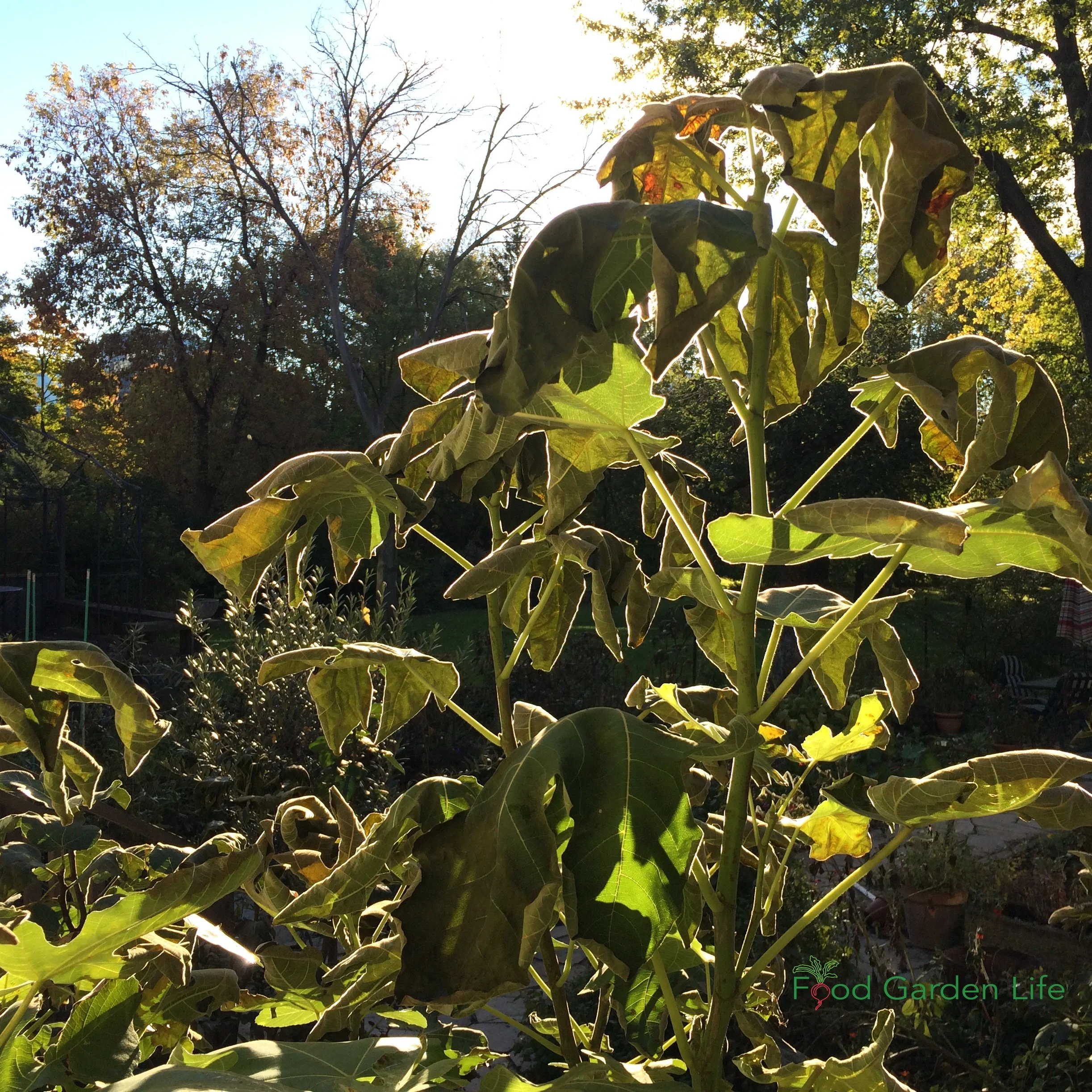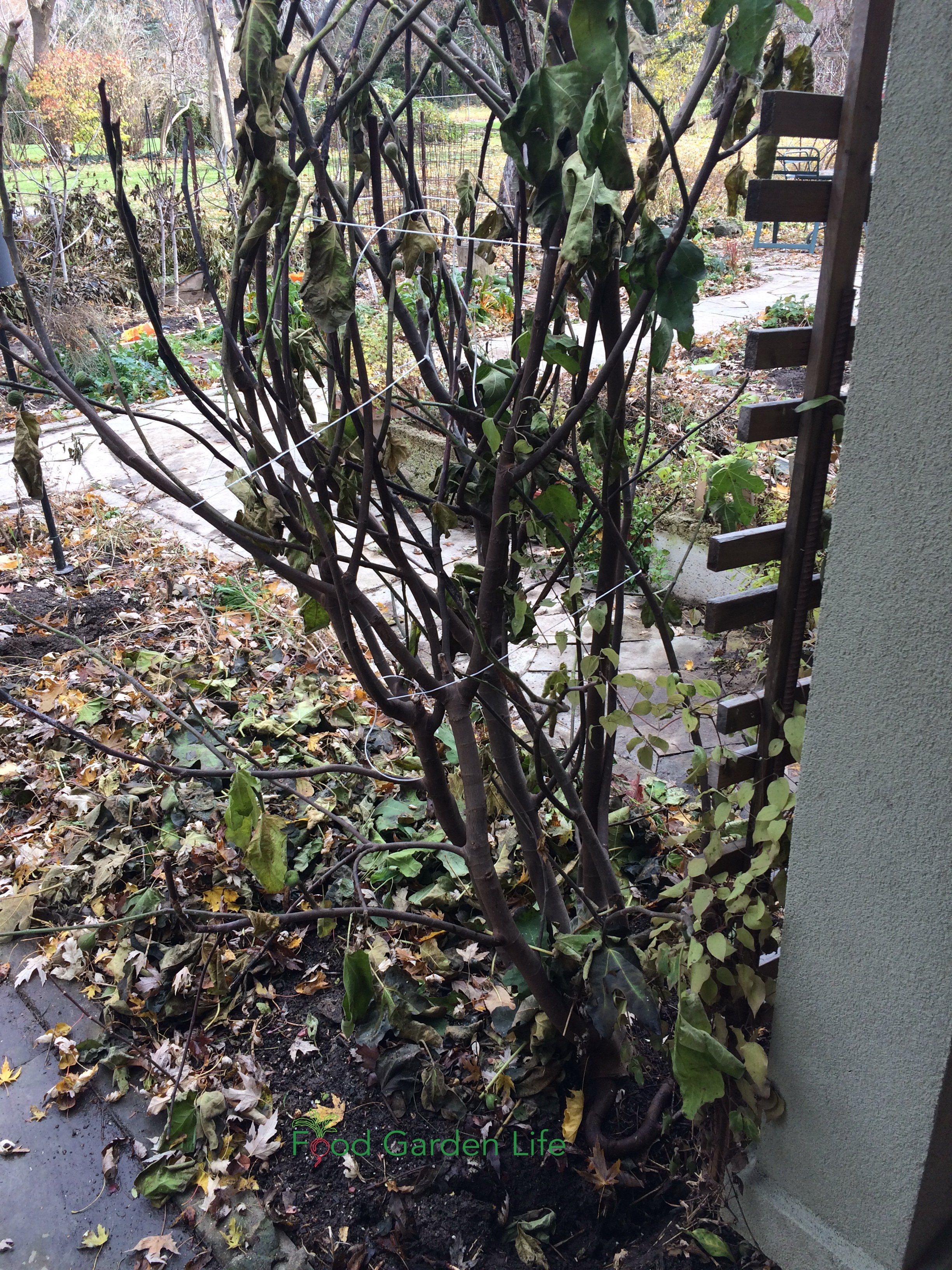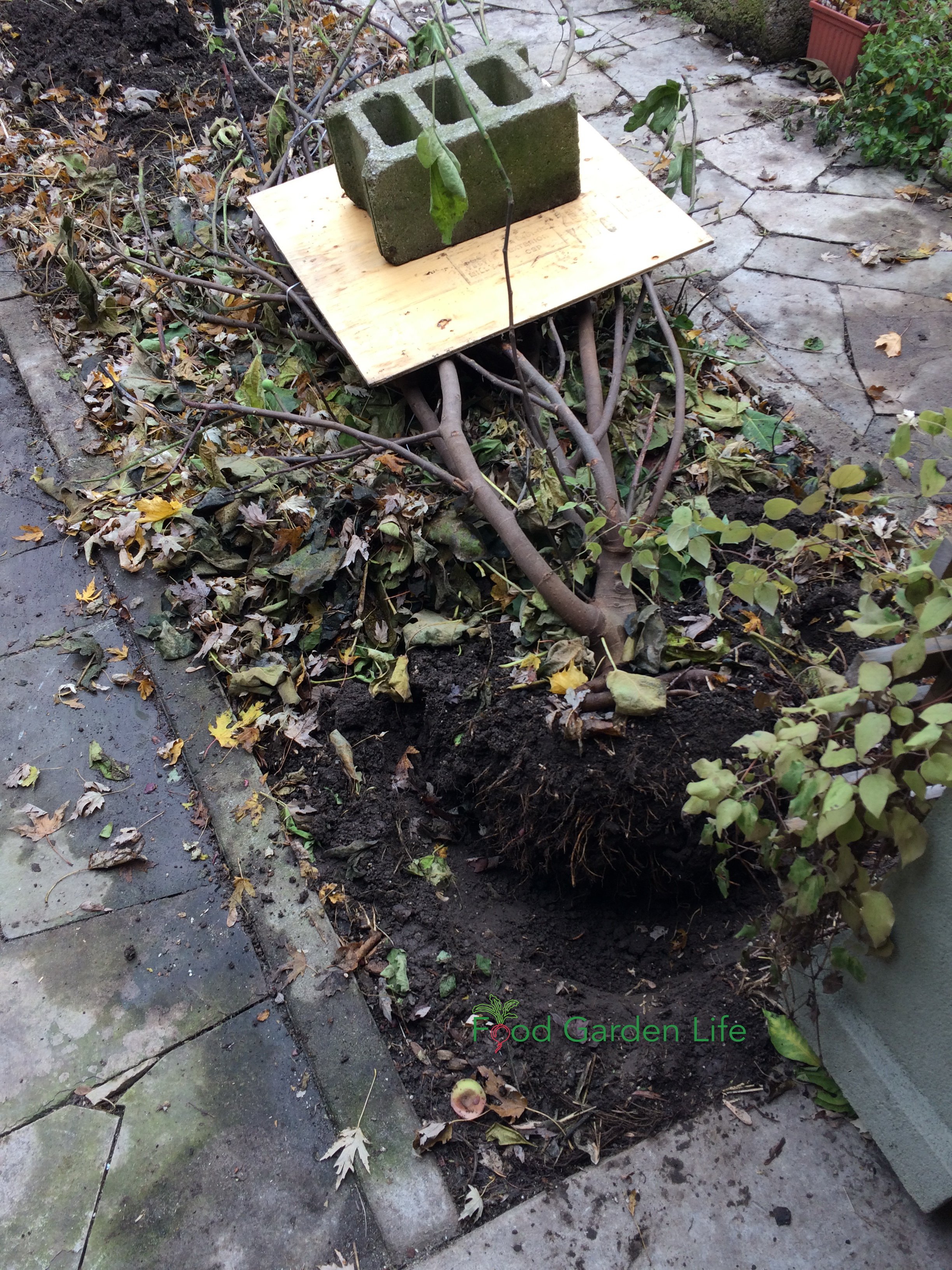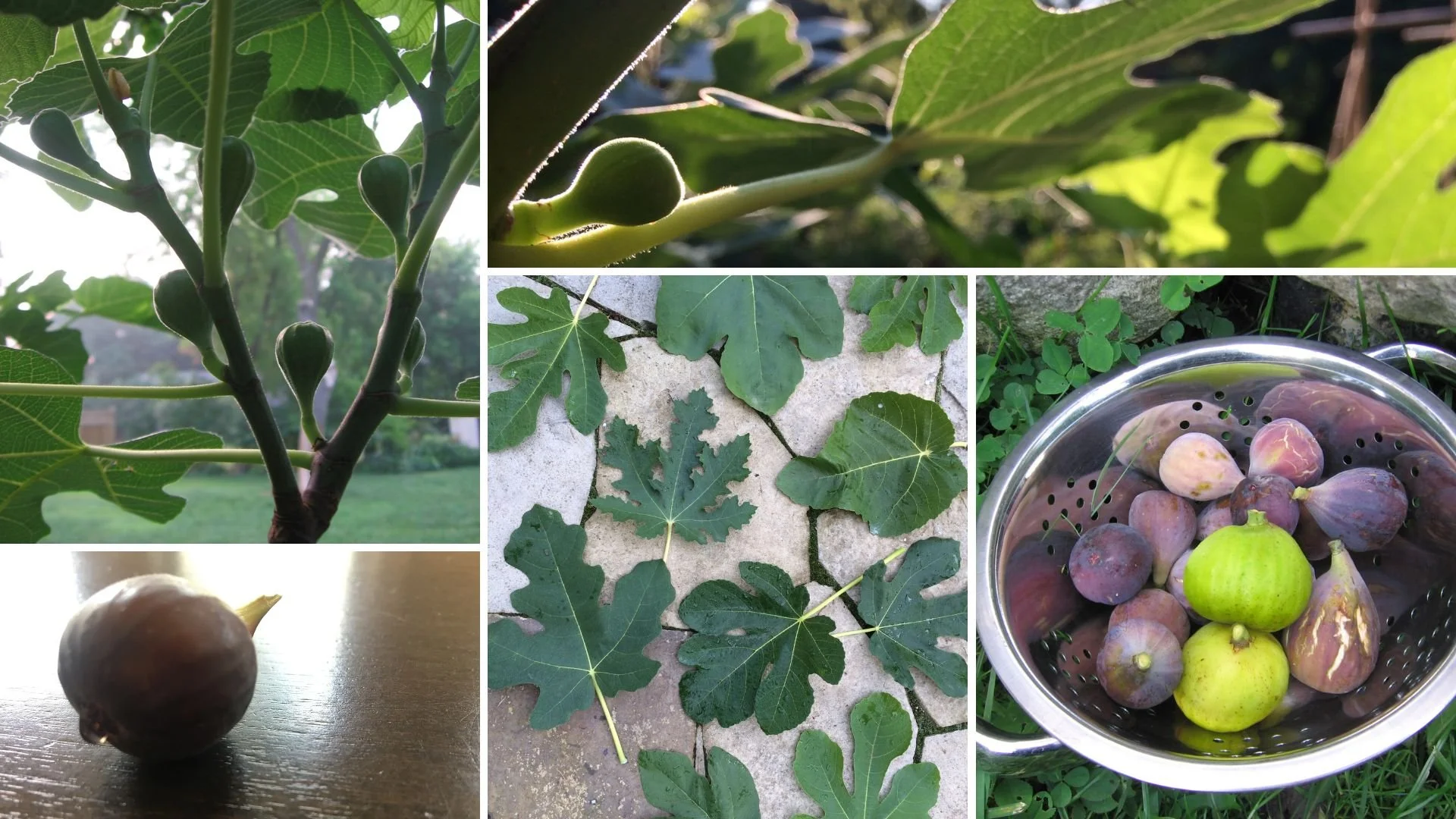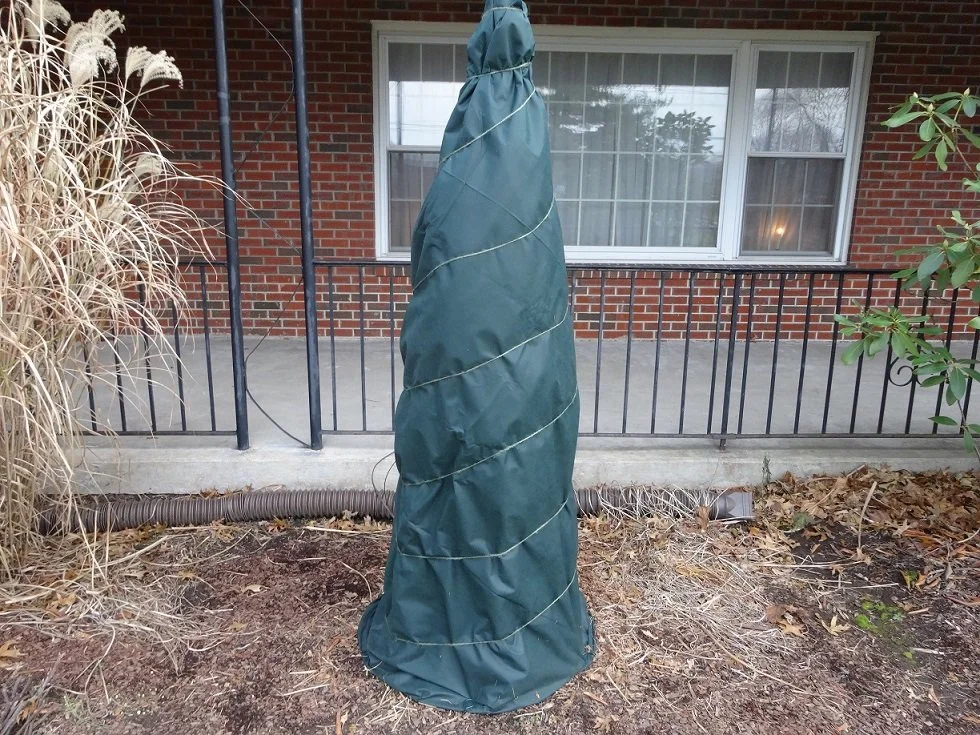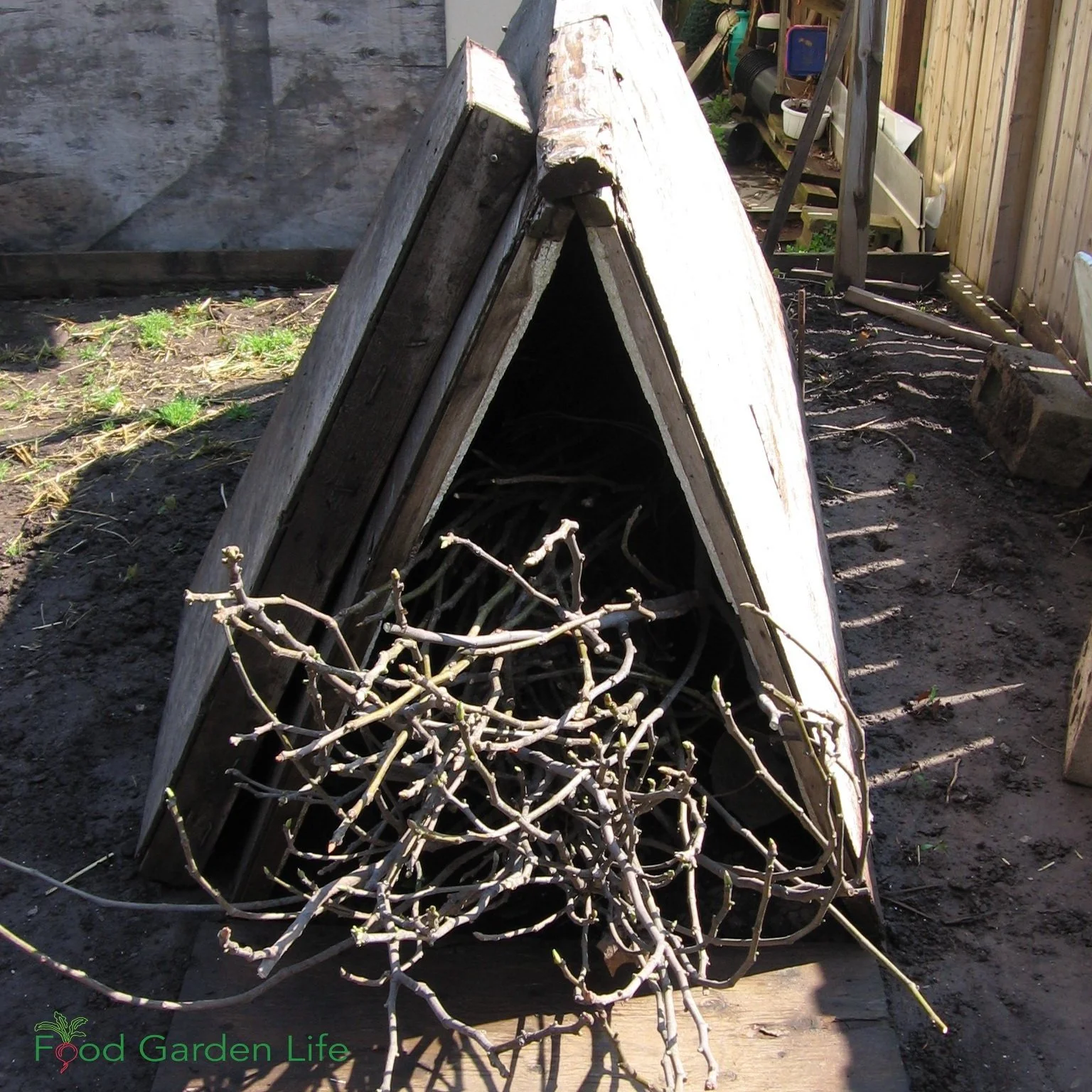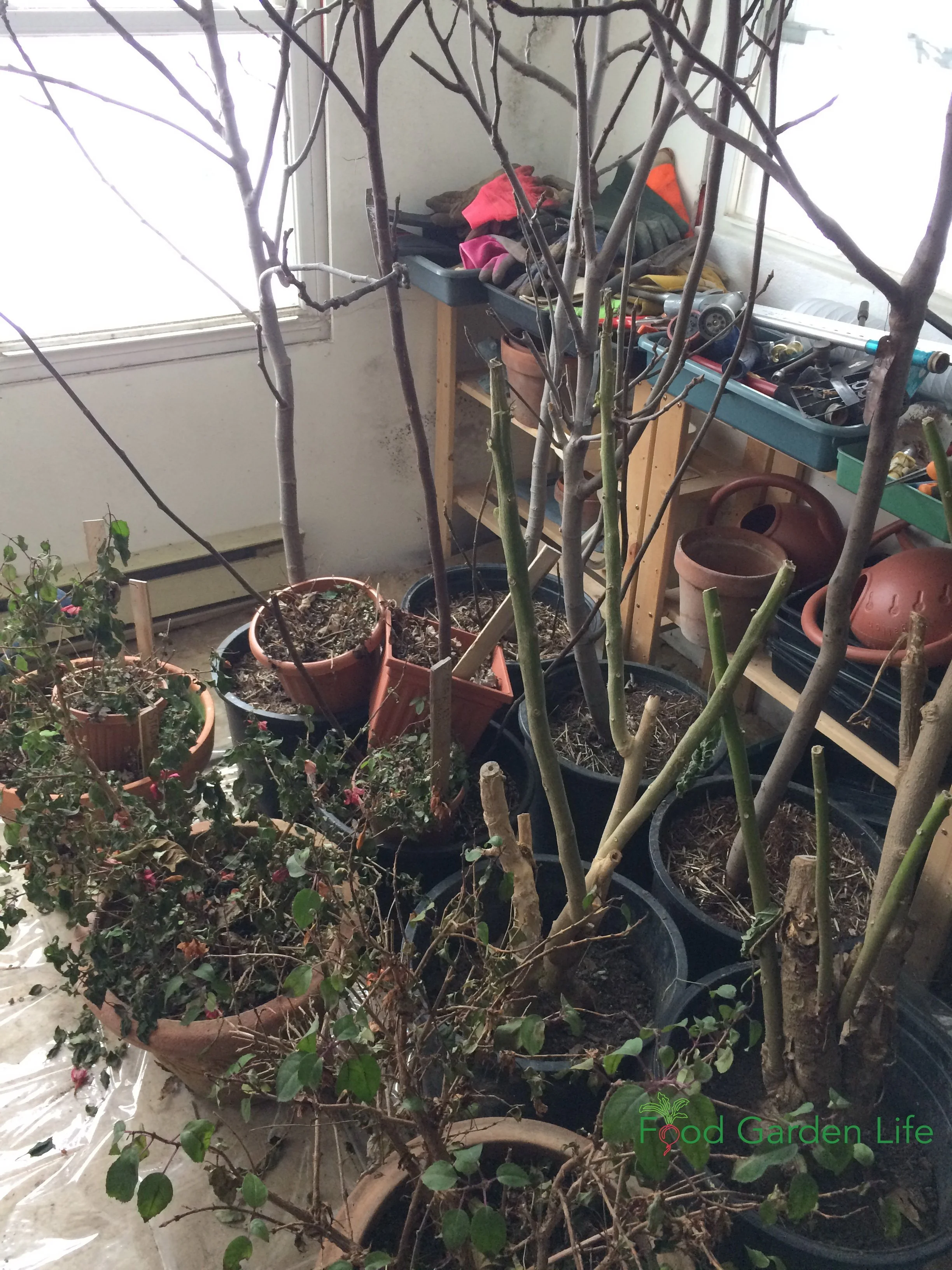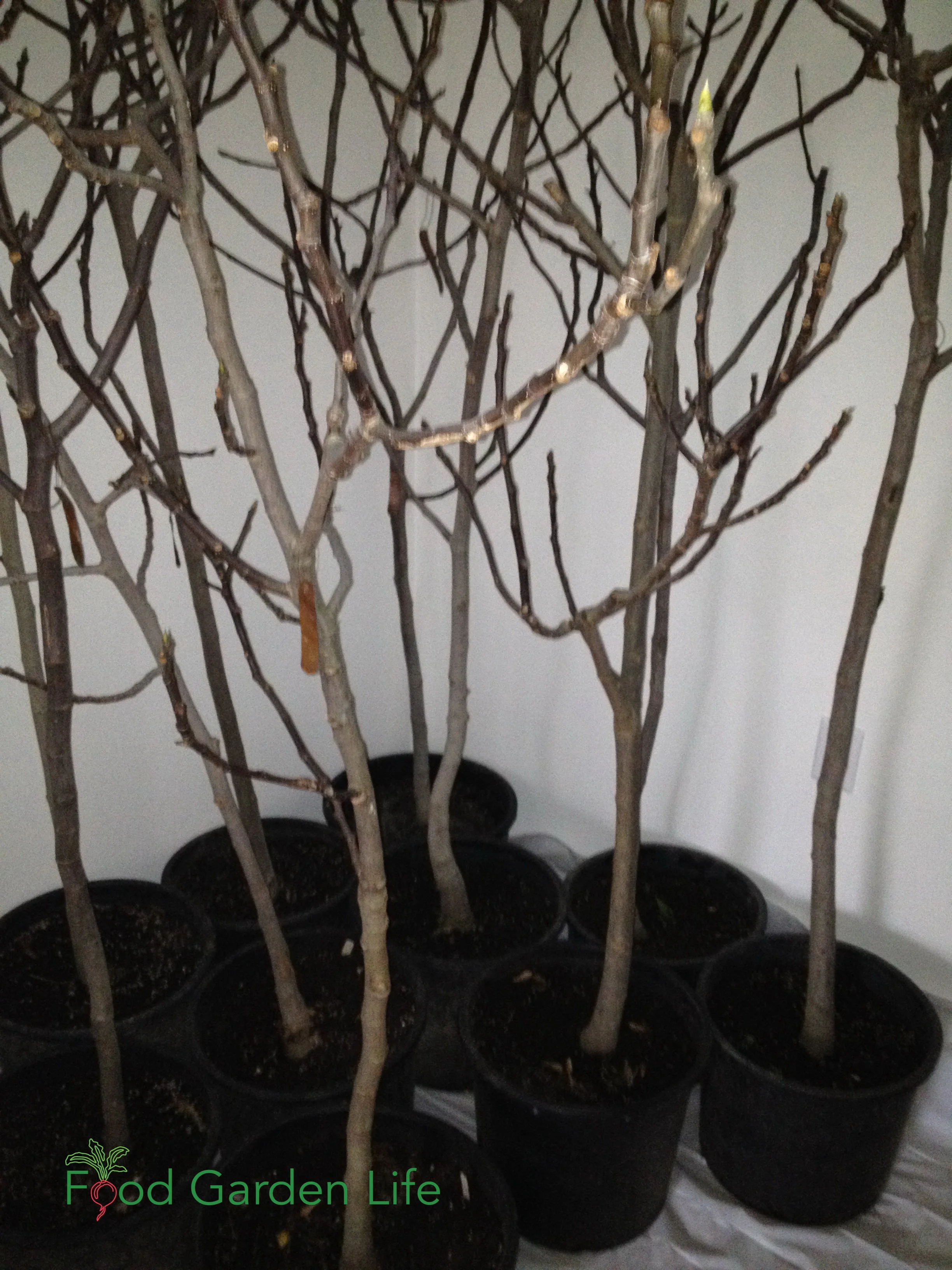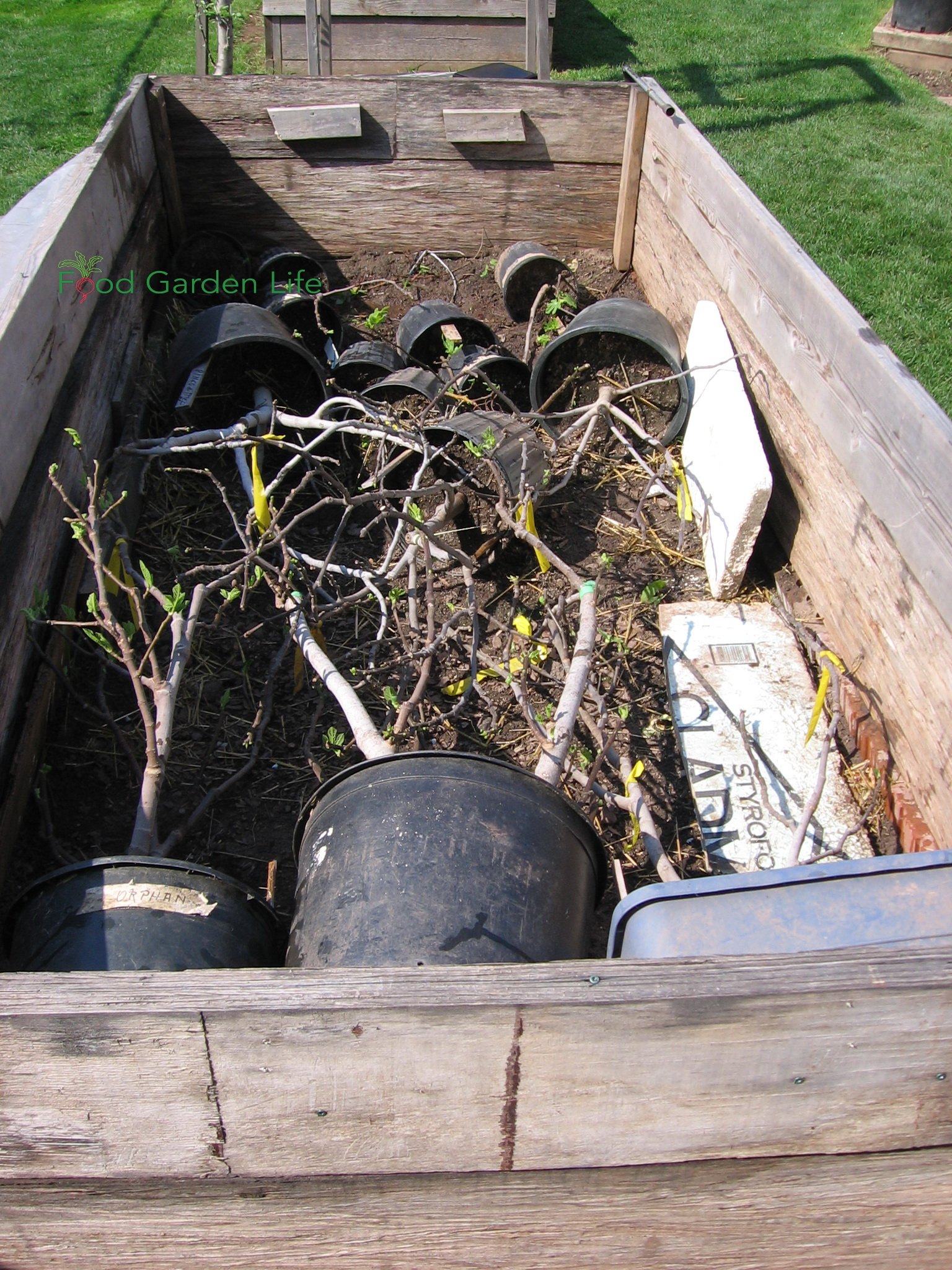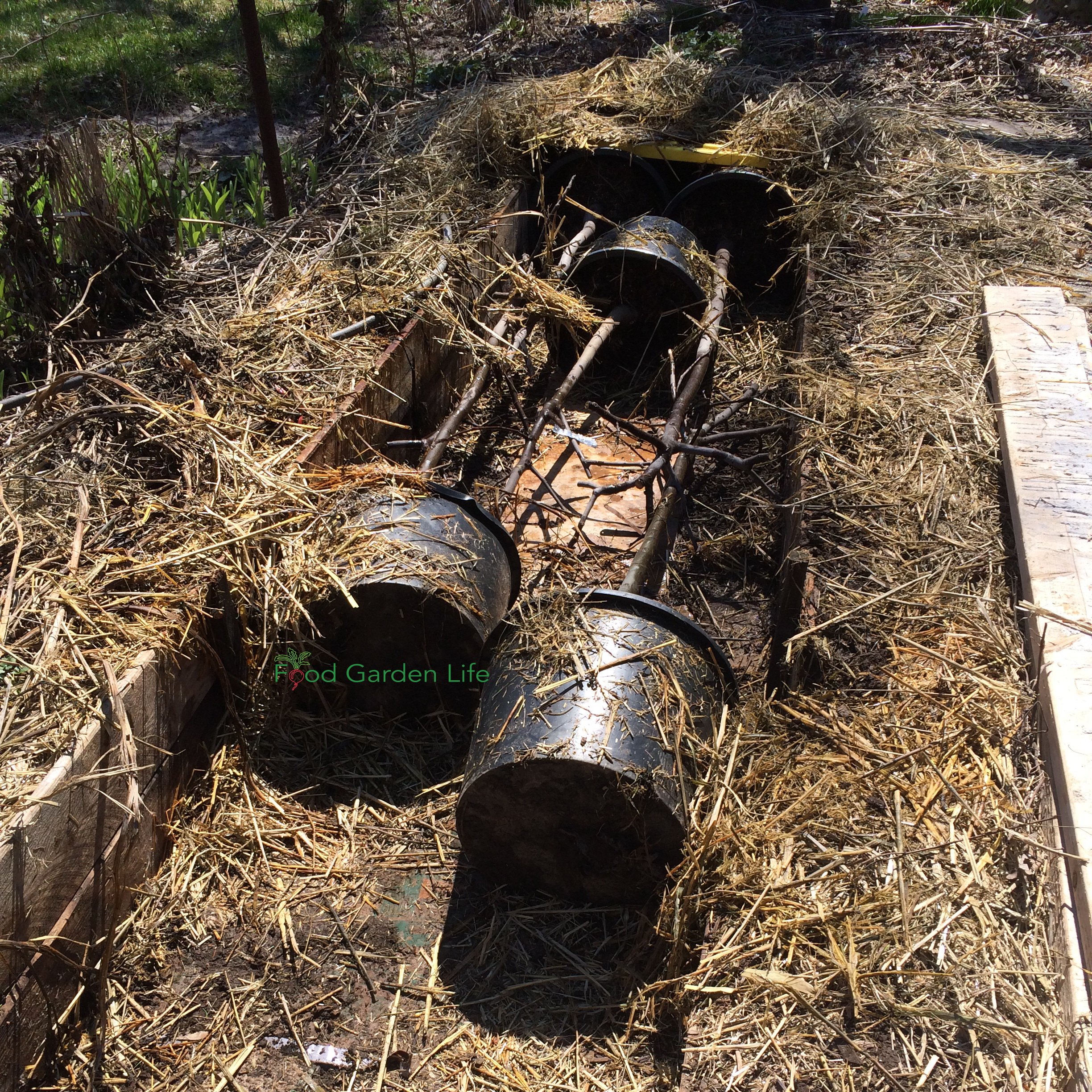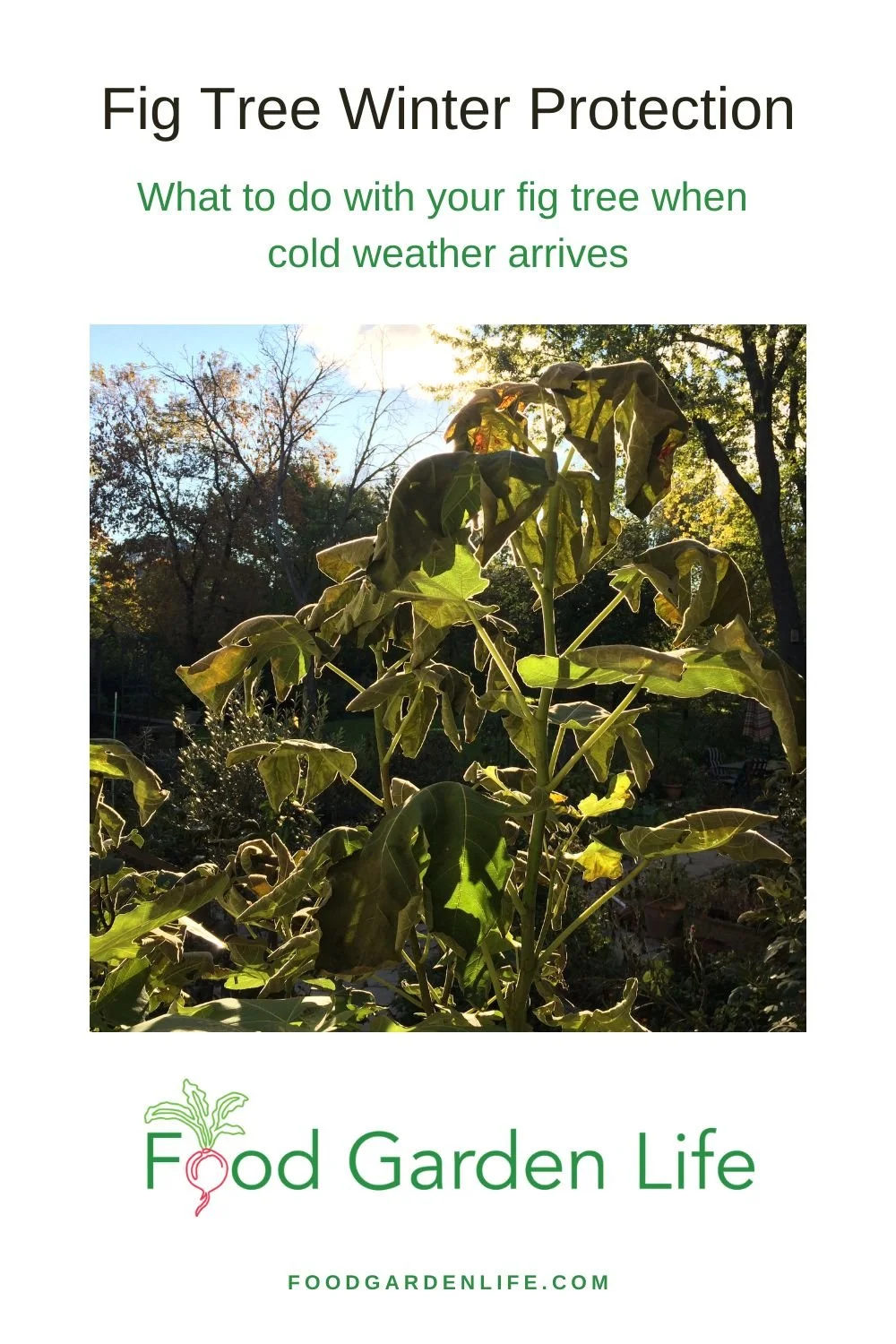Fig Tree Winter Protection
In places where the seasons change, figs drop their leaves and go dormant over the winter.
In some places, you don’t need to do anything for fig trees to survive the winter.
But as you move into colder zones, you’ll need to protect a fig tree in winter.
Protecting a fig tree in winter is fairly easy because the tree is dormant. There are no leaves, and you don’t have to fuss over it. It’s easier to take care of than a houseplant!
This guide to how to protect a fig tree in winter has lots of ideas for ways to protect your fig plants.
You Don’t Need a Greenhouse for Fig Tree Winter Protection
I break fig tree winter protection into two broad tactics:
Indoors
Outdoors
Remember, they go dormant. If they haven’t already shed their leaves by the first fall frost, they will drop them soon afterwards.
Having no leaves means you don’t need bright conditions for them. They don’t need warmth either.
Fig Tree Winter Temperatures
Fig leaves wilting after frost. As the fig tree goes dormant, you have many options for protecting it over the winter.
Fig trees can take colder temperatures than many people realize. Mature trees survive temperatures down to approximately -7 to -9°C (15-20°F). (Often more…but hardiness is not an exact science.)
Figs are hardy into USDA Zone 8. And beyond that with suitable varieties and the right location.
Here’s your challenge: Figure out a way to moderate temperature extremes around your fig plant over the winter.
If you’re new to figs, read this introduction to figs.
Whichever way you protect your fig tree for the winter, you’ll want to keep the plant dormant until you’re ready for it to grow in the spring. So ideally, you want somewhere cool and dark.
If it grows indoors, in low-light conditions, you end up with weak, lanky growth. Here’s what you’d end up with.
Fig Tree Winter Protection – Winter Outdoors
Outdoors – Tipped Over
A common overwintering technique in cold climates is to lay over the fig plant so that it’s at ground level. This is because soil temperature fluctuates more slowly than air temperature – and the soil temperature usually doesn’t get as cold as air temperature.
In very cold areas, fig growers will lay over a fig tree and bury it below the ground level. Being below ground level and covered with soil greatly moderates temperature changes.
In areas where winter temperatures are not as cold, it might be sufficient simply to lay a fig plant flat to the ground and then mulch it.
In either case, it is helpful to prune the plant first, and then tie the branches together before laying it flat. It makes it easier to cover.
One final consideration: Mulches that are dry have better insulating properties.
Steps to Tipping Over Fig Trees for Winter
Prune your dormant fig tree.
Bunch up the branches with twine…it might look like a rocket ship!
Excavate around the tree (leaving just a little “hinge” of roots on the side towards which it will be tipped).
Bend, and see if it moves. If not, dig more. Don’t force so hard that you break the trunk…I know from experience that this can happen.
When you’ve finished digging, there will be far fewer roots…and that’s OK.
Tip over the plant so that it’s flat to the ground.
You might find it necessary to pin down the plant (I use concrete blocks over a piece of plywood).
Cover with mulch or soil (if using soil, you can put down a plywood covering first, which makes it easier to unbury the plant in the spring).
Find Out How to Grow Your Own Figs
Harvest more figs this year! Grow Figs in Cold Climates Masterclass shows you how to grow a fig tree in a pot, or outside with protection. So you can harvest lots of figs!
Materials for Insulating Fig Trees for Winter
There are lots of materials that can be used to insulate figs. I use straw bales (which I use for my straw-bale gardens afterwards.)
Here are some more ideas:
Bags of potting soil
Leaves in garbage bags
Wood chips
Wood with foam sheeting attached
Some gardeners also use a tarp or sheeting so mulch doesn’t get wet and lose insulating properties…just be aware that tarps can hold in moisture, and a wet tarp touching shoots can cause rot
Outdoors – Wrapping a Fig Tree for Winter
Fig tree wrapped for winter. (Spoiler alert, there is a heat tube hidden in there, here’s how it’s done.)
In some areas, it’s possible to leave in-ground fig plants in the same spot year-round, without chopping away at the roots and tipping them flat to the ground.
In such borderline hardiness areas, gardeners can simply wrap fig trees to protect them.
Wrapping materials can include:
Burlap (topped with tar paper so water does not seep in)
Old carpet
Snow fencing and filled with dry leaves
Where wrapping is not quite enough, a temporary structure can provide sufficient protection.
Temporary structure ideas:
A fig bush bent over for winter, and covered with an insulated a-frame.
Building a box-like structure against the wall of a building to shelter figs growing against the wall
A “fig house” made by cladding plywood to posts
An insulated a-frame structure built over bent-over fig plants
In any of these temporary structures, a drum full of water can be used to capture and slowly release heat.
Here’s a super-creative temporary structure, heat tubes!
Fig Tree Winter Protection – Winter Indoors
Indoors – In a Bright Space
Dormant fig trees spending the winter in my cold, bright potting shed.
If you have a greenhouse, you can keep your fig there. Let your potted fig become dormant, and then store it in the greenhouse. The temperature can be cool in the greenhouse – you don’t need to keep the fig plant actively growing.
Some gardeners have a small greenhouse that is only heated in time to grow seeds for spring garden transplants. This sort of setup can work well, waking up your fig early so that it has an early start. The key thing to watch is the minimum temperature in the early winter, when the greenhouse is unheated.
If you’re considering planting a fig in the ground in a greenhouse, know that they grow a lot. It’s common practice to line the bottom and sides of the planting hole with stones or brick to restrict root growth.
One final thought on figs in greenhouses: A greenhouse that has permanent sides and a removable top. I saw this setup once, something that the owner, Peter, called his “figatorium.” Same idea as a sports stadium with a retractable roof!
The advantage to this sort of arrangement is that the plants benefit from more warmth in the shoulder seasons of spring and fall, allowing an earlier start and additional ripening time in the fall. In areas with sufficient summer heat for ripening main crop figs, the removable roof is helpful because it prevents the temperature from becoming excessively hot.
Indoors – In a Dark Space
Dormant fig trees spending the winter in my cold, dark garage.
While many gardeners aspire to a greenhouse, a far more common approach to overwintering dormant fig plants is somewhere cool and dark.
I’m talking about somewhere like a cold cellar, a shed, a garage, or an attic.
Ideally, this space will have a maximum temperature of 4-7°C (40-45°F). If it’s warmer than this, fig plants often come out of dormancy earlier than you want.
If you have an indoor space but it gets too cold, consider an insulated space within it and heat only that space, and only as needed.
For example, build an insulated lean-to within a garage, or wrap plants with insulation.
A note on garages: Attached garages tend to be warmer than stand-alone garages, because they benefit from heat escape from the house. Structures on concrete pads tend to stay warmer too. I have a stand-alone garage, so I insulated it and installed a small electric baseboard heater. Here in the Toronto area, there’s no need for me to turn on the heater for most of the winter, and I only turn it on low for a few of the coldest days in January and February.
Indoors – Care over Winter
Check the soil moisture of dormant potted fig trees that are stored indoors over the winter. It should be on the dry side of moist.
How often you need to water (if at all) depends on the humidity of the air where you’re storing it.
If the soil is too moist, the roots might rot.
If the soil is too dry, the plant can die.
When you’re in doubt about when to water, stick your finger into the soil. If it feels damp, wait a bit longer.
Here’s more about how often to water a potted fig tree over the winter.
Top Tip: Fig Tree Winter Protection
Be creative and overwinter your figs in a way that suits you and your yard. Because fig trees go dormant, there are lots of different ways we can get them through the winter.
There is no need for a greenhouse or bright window to keep figs in cold climates!
Fig Tree Winter Hardiness
Many things affect fig tree cold hardiness:
Young fig trees are more tender than mature ones
Fruit and young shoots are affected by cold before older, woodier stems
If the fig tree is already dormant, it can take more cold
Some fig varieties are more cold-tolerant than others (see this article for good cold-adapted varieties)
And then there’s the elements:
The amount of wind the fig tree is exposed to
The duration of cold temperatures
How sheltered or exposed the fig is
How many degrees the temperature drops
The timing of the cold temperature (e.g., at the end of the night the plant might be soon warmed by sun)
Find Out How to Grow Your Own Figs
Harvest more figs this year! Grow Figs in Cold Climates Masterclass shows you how to grow a fig tree in a pot, or outside with protection. So you can harvest lots of figs!
Planning What to do with you Fig Tree in Winter
So now you have more ideas about fig tree winter protection, you can think about your own situation.
Here are things to think about as you plan what to do with your fig tree:
Your zone: How much protection your fig tree needs over winter depends on your plant hardiness zone and on whether you have protected areas within your yard (called “microclimates.”)
You: The way that you decide to protect your fig over the winter will depend on how much lifting and schlepping you can deal with.
Your Property: Each house and yard is different. I once met a Toronto gardener with what he called a “fig cave,” a stairwell between his garage and his house, which was on a hill. Think about what options you have for overwintering figs around your property.
Your Budget: There are unusual gadgets for people who want to innovate when overwintering figs. (For example, I know a gardener with a thermostatically controlled outlet that runs the heating cable around his fig.) Other gardeners innovate using commonly available supplies.
More on How to Grow Figs
Fig Articles
Interviews with Fig Experts
Fig Books
Fig Masterclass
Find Out How to Grow Your Own Figs
Harvest more figs this year! Grow Figs in Cold Climates Masterclass shows you how to grow a fig tree in a pot, or outside with protection. So you can harvest lots of figs!

